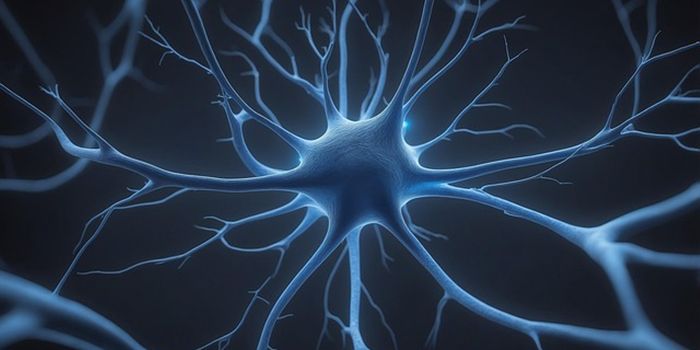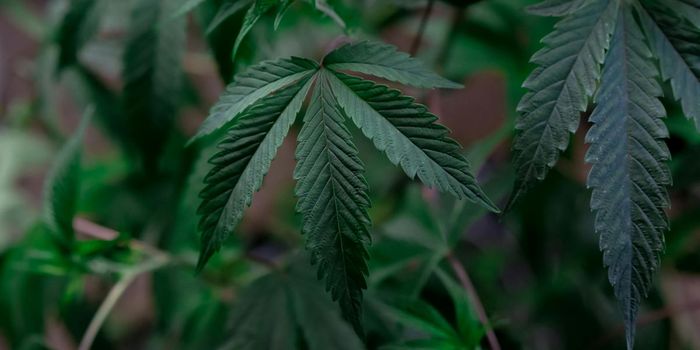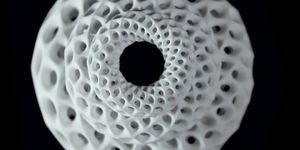
The combination of colder winter weather in some areas and the holidays can create a one two punch of too much food and too little exercise, leading to weight gain. While humans don't hibernate like bears, we do seem to retreat indoors, give up on exercise and chow down on comfort food until spring comes. Researchers have found however that the chilly air that sends us running for a cozy blanket and a warm fire can actually help keep us at a healthier weight.
Scientists at the University of California, Berkeley have discovered a protein that is critical for the formation of brown fat, the type of fat in our bodies that generates heat. When the body is exposed to chilly air, the protein, called transcription factor Zfp516, also helps the more abundant white fat in our bodies -- the kind that stores excess energy -- become more similar to brown fat in its ability to burn off those Christmas cookies.
Essentially there are two kinds of fat in our bodies. White fat, which is more prevalent, simply stores energy from foods. When food is consumed, some of it is converted into energy, but any excess not expended is stored in white fat. The more food we take in and don't burn off, the more white fat is created. Conversely brown fat burns energy to keep us warm. Brown fat gets its hue from relatively high levels of mitochondria, the part of cells that power the body. When lab mice were fed a high fat diet, the mice exposed to colder temperatures gained 30% less weight than the control mice. Scientists think the Zfp516 protein is activated by colder temperatures and helps white fat behave more like brown fat, burning calories and keeping weight lower.
"Knowing which proteins regulate brown fat is significant because brown fat is not only important for thermogenesis, but there is evidence that brown fat may also affect metabolism and insulin resistance," said principal investigator Hei Sook Sul, UC Berkeley professor of nutritional science and toxicology.
"It has been noted that outdoor workers in northern Finland who are exposed to cold temperatures have a significant amount of brown fat when compared to same-aged indoor workers, but overall, the percentage of brown fat in adults is small compared to white fat," said Sul. "We also know that obese people have lower levels of brown fat."
When the researchers disabled the gene for Zfp516 in mouse embryos, the embryos did not develop any brown fat. In another experiment, researchers found that mice with higher levels of Zfp516 protein were able to convert more white fat tissue into brown-like fat when exposed to cold air. Study co-lead author Jon Dempersmier, a Ph.D. student in nutritional science and toxicology said, "The brown-like fat, the kind converted from white fat tissue, is inducible by cold."
Researchers believe that brown fat is also related to diabetes, as lower amounts of brown fat are associated with insulin resistance, leading to Type 2 Diabetes. The study was published in the January 8th issue of the journal The Molecular Cell.
"Brown fat is active, using up calories to keep the body warm," said Dempersmier. "It'll burn fat, it'll burn glucose. So the idea is that if we can harness this, we can try to use this in therapy for weight loss and for diabetes."
 The combination of colder winter weather in some areas and the holidays can create a one two punch of too much food and too little exercise, leading to weight gain. While humans don't hibernate like bears, we do seem to retreat indoors, give up on exercise and chow down on comfort food until spring comes. Researchers have found however that the chilly air that sends us running for a cozy blanket and a warm fire can actually help keep us at a healthier weight.
The combination of colder winter weather in some areas and the holidays can create a one two punch of too much food and too little exercise, leading to weight gain. While humans don't hibernate like bears, we do seem to retreat indoors, give up on exercise and chow down on comfort food until spring comes. Researchers have found however that the chilly air that sends us running for a cozy blanket and a warm fire can actually help keep us at a healthier weight. 







